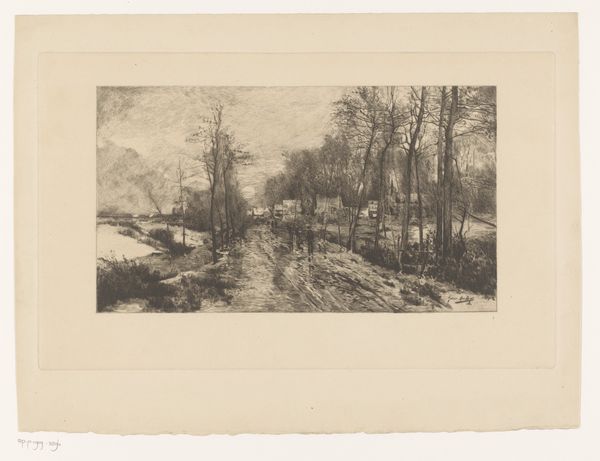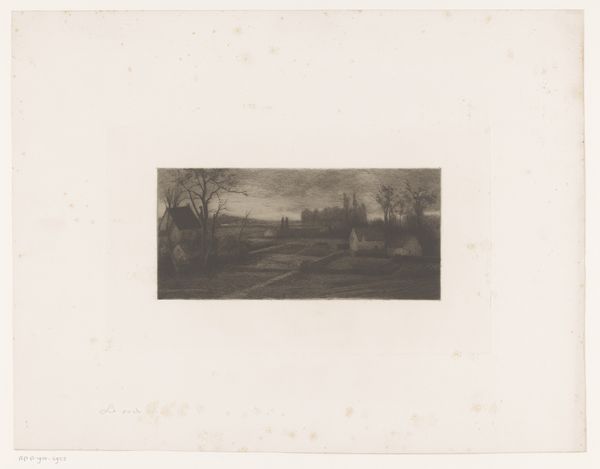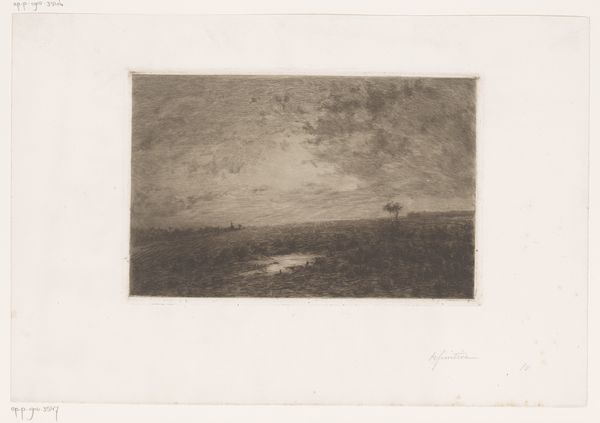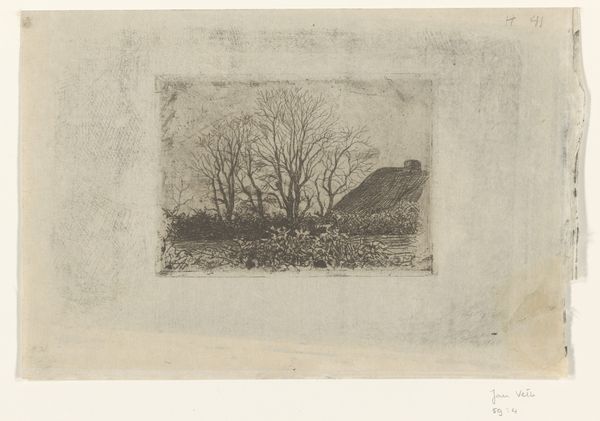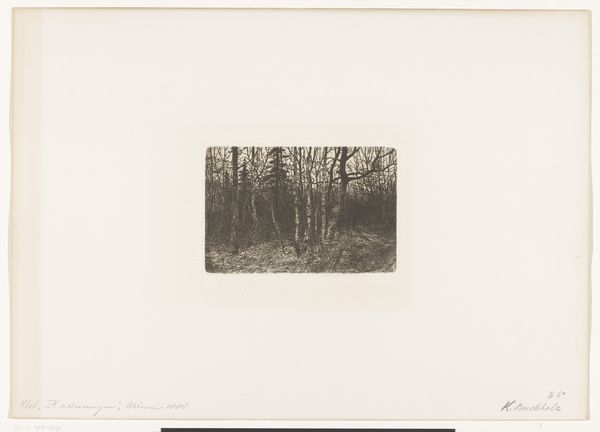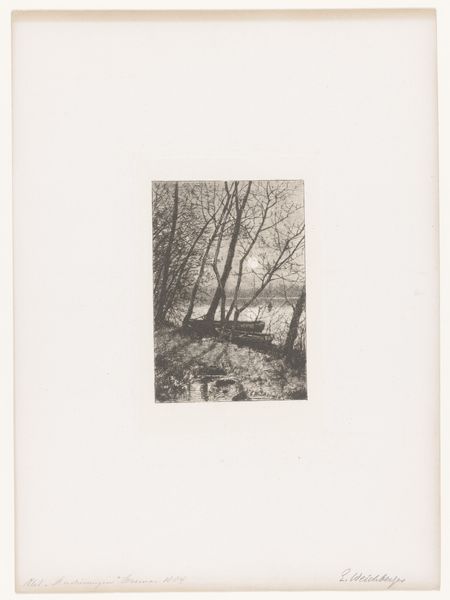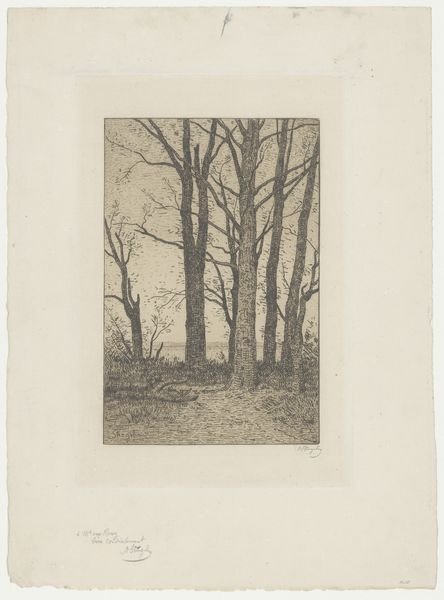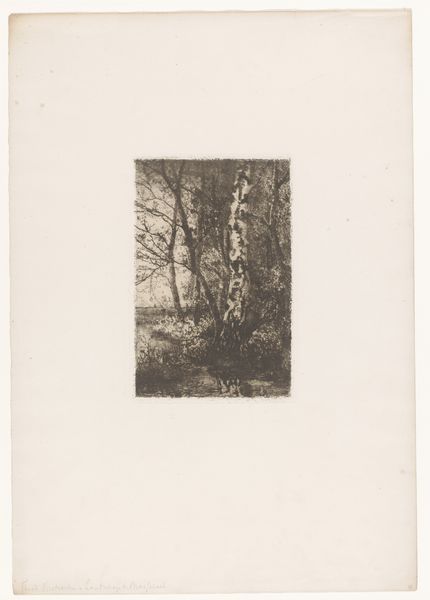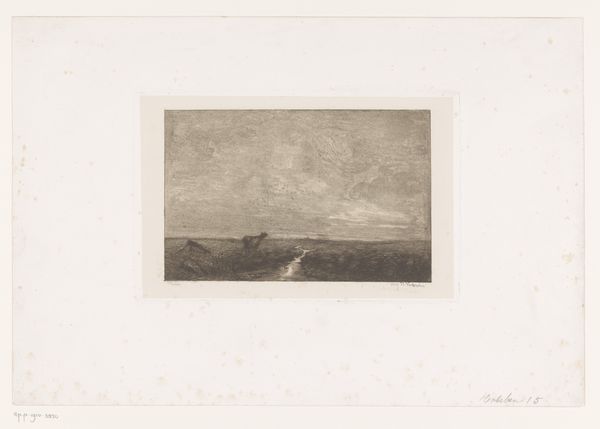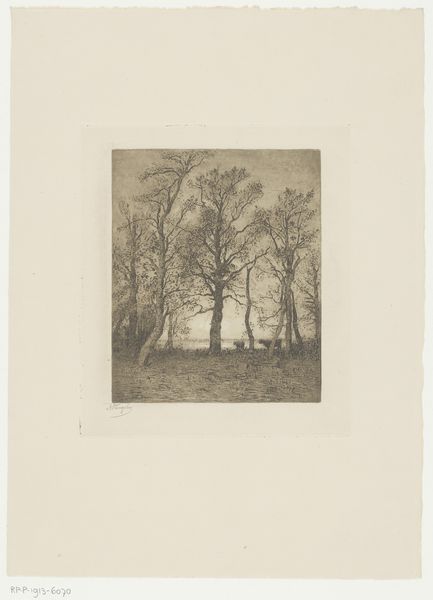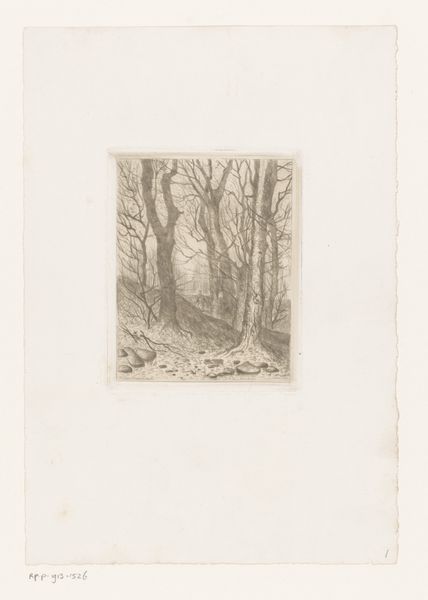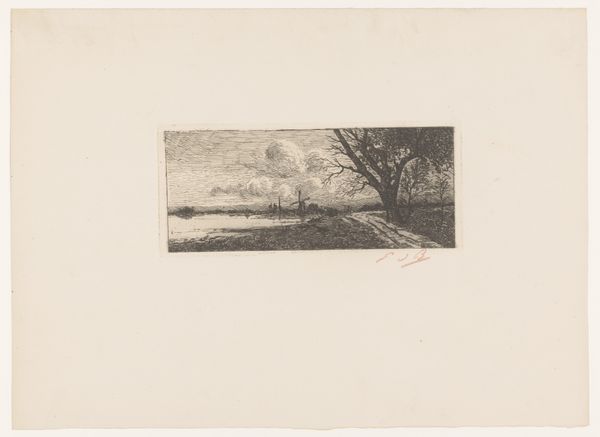
print, etching
# print
#
etching
#
light coloured
#
landscape
#
realism
Dimensions: height 98 mm, width 146 mm
Copyright: Rijks Museum: Open Domain
Editor: This is "Landscape with a Farmhouse by a Stream" by H. van Meerbeeck, dating from somewhere between 1850 and 1913. It's an etching, and there’s something very serene, almost melancholy, about the way the light falls. What's your take on it? Curator: Well, considering the time, let’s think about Realism and its relationship to industrialization. How does the choice of representing rural scenes relate to the socio-political context of the late 19th century? Do you think there is an element of resistance to modernity present in the scene? Editor: I hadn't thought about it that way, but I can see how a seemingly simple landscape could actually be a statement. Perhaps it is romanticizing rural life in the face of increasing urbanization. Curator: Precisely! And we need to also think about the market for art at this time. Who was buying these kinds of images? The rising middle class often yearned for connection to nature. Also, how does the medium of etching contribute? Was printmaking enabling a wider audience to own art and engage in a form of political messaging? Editor: That makes sense. So, the very act of creating and distributing these prints democratized art in a way, making it accessible to more than just the elite. It wasn't just about showing a pretty picture, but also making art part of everyday life. Curator: Absolutely. Museums at that time played a pivotal role, by shaping the public’s view of this form of art. Editor: That’s fascinating! I’ll never look at a landscape print the same way again. Thank you for making me think so critically about the artwork's social life and the way it becomes relevant through art institutions. Curator: My pleasure. Thinking about art as part of history changes how we view our modern society.
Comments
No comments
Be the first to comment and join the conversation on the ultimate creative platform.
